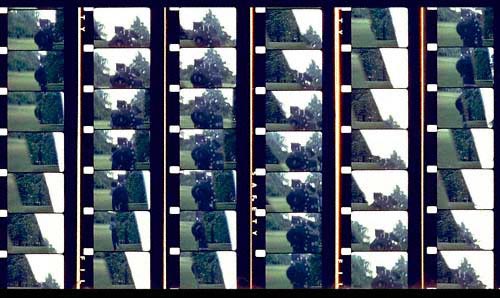TECHNOLOGY AND LANDSCAPE
Chris Welsby has been making and exhibiting work since 1969. His films and film/video installations have been exhibited internationally, at major galleries such as the Tate and Hayward galleries in London, the Musée du Louvre and the Centre Georges Pompidou in Paris, the Museum of Modern Art in New York, the Carnegie Institute in Pittsburgh, and the Art Gallery of Ontario in Toronto.
"In my single screen films and single channel videos the mechanics of film and video interact with the landscape in such a way that elemental processes—such as changes in light, the rise and fall of the tide or changes in wind direction—are given the space and time to participate in the process of representation. The resulting sequences of images make it possible to envisage a relationship between technology and nature based on principles other than exploitation and domination.
"The gallery installations deal with the transformations which occur when the non-Euclidean space of the landscape is imported into an architectural space based on the rules of geometry and perspective. The dimensions of the gallery, the size and scale of the image, the proportions of the video monitor or projection screen, the positioning of the monitors or screens, are primary considerations, and central to the meaning of the work. The fragmentation of image and sound, which characterises these installations, acknowledges the split between culture and nature but, at the same time, opens up the possibility of a less dualistic reading.
"Unlike the landscape painters and photographers of the nineteenth century, I have avoided the objective view point implicit in panoramic vistas or depictions of homogeneous pictorial space. I have instead concentrated on 'close up' detail and the more transient aspects of the landscape, using the flickering, luminous characteristics of the film and video mediums, and their respective technologies, to suggest both the beauty and fragility of the natural world.
"The process of re-presenting the landscape in either the single screen works or the installations is not seen to be separate from nature or in any way objective, but is viewed instead, as part of a more symbiotic model in which technology and nature are both viewed as inter-related parts of a larger gestalt." [/quote]

[quote]
Windmill II
1973, 8 min, colour, silent, 16mm
The camera films a park landscape through the blades of a small, hand-built windmill. Each of the eight blades was covered in Melanex (mirrored fabric). The film was shot on a windy day in the park, with three 100-foot takes being shot on the same day. The camera angle remained the same throughout. Variations in wind speed and direction cause a constantly shifting relationship between the landscape in front of the camera, as seen between the blades of the windmill, and the reflection of the camera with the landscape behind it. The rhythm of this movement between foreground and background is created by variations in the strength and direction of the wind. [/quote]